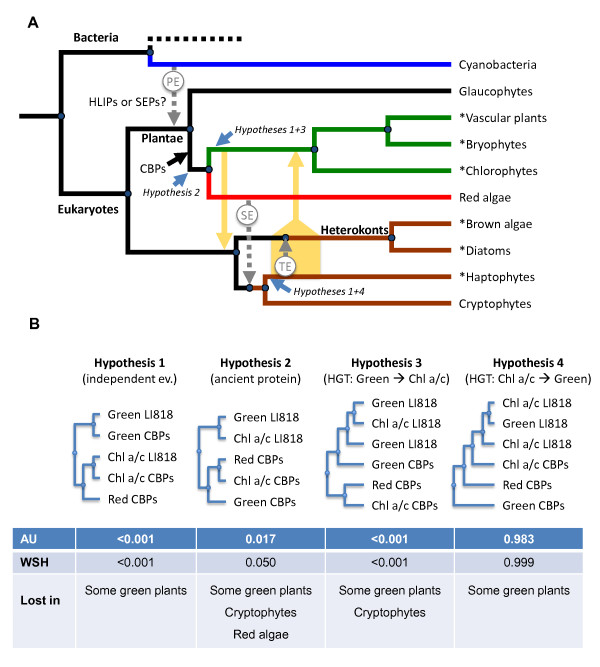Figure 5.
Schematic representation of the possible evolution of CBPs from Chl a/b-, Chl a-, and Chl a/c-containing organisms. A: Simplified representation of the nuclear phylogeny of photosynthetic organisms according to Sanchez-Puerta and Delwiche [70,71]. Hypotheses 1, 2, 3, and 4 as well as blue arrows indicate possible origins of LI818 proteins (see B and text). Orange arrows designate possible horizontal gene transfers according to hypotheses 3 and 4. Names marked with "*" indicate branches with known LI818 proteins. PE = primary endosymbiosis, SE = secondary endosymbiosis, TE = tertiary endosymbiosis. B: Different hypotheses regarding the position of LI818 proteins and associated p-values using the Approximately Unbiased test (AU) and the Weighted Shimodaira-Hasegawa test (WSH). "Lost in" indicates lineages in which, based on currently available sequence data, we would assume LI818 proteins to have been lost according to these hypotheses. Hypothesis 1 assumes that LI818 originated independently in green plants and chlorophyll a/c-containing organisms; Hypothesis 2 assumes that LI818 proteins evolved before the separation of the red- and green lineage; Hypothesis 3 assumes a transfer of genes from the green lineage to a common ancestor of heterokonts and haptophytes (Chl a/c) during the cryptic endosymbiosis event proposed by Moustafa et al. [28]; Hypothesis 4 assumes a horizontal gene transfer from an ancestral chlorophyll a/c-containing organism to an early member of the green lineage.

